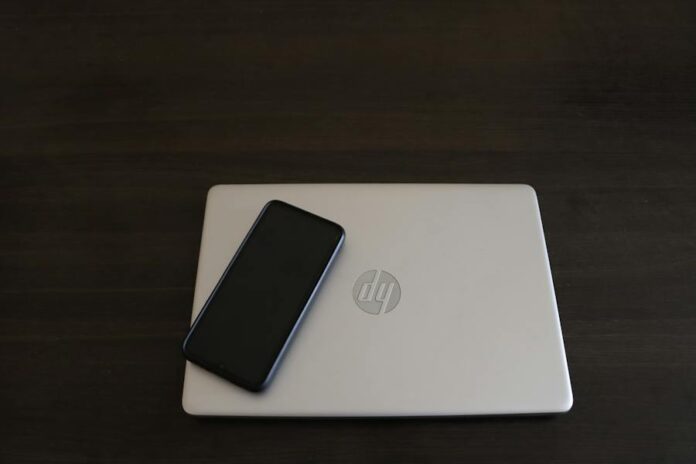A reliable Wi-Fi connection is essential for almost every aspect of our lives, from work to entertainment. However, if you own an HP laptop and wonder, “Why is my HP laptop not connecting to Wi-Fi?” you’re not alone. Wi-Fi connectivity issues are a common concern for HP laptop users. This comprehensive guide will delve into the reasons behind these problems and provide a step-by-step troubleshooting process to help you get your HP laptop back online. Whether you’re a novice or a tech-savvy user, this article will equip you with the knowledge to effectively diagnose and resolve Wi-Fi issues. Let’s dive in and reconnect your HP laptop to the internet again.
Why Is My HP Laptop Not Connecting To Wifi?
If your HP laptop is not connecting to Wi-Fi, several factors could be causing the issue. Start by checking if your Wi-Fi adapter is enabled, ensuring you’re within range of your Wi-Fi network, and confirming your network’s password. It’s also a good idea to restart your laptop and router. Sometimes, outdated or incompatible drivers can cause problems, so make sure your Wi-Fi drivers are up to date. If these steps don’t work, you might need to dig deeper into advanced troubleshooting or seek professional assistance from HP support or a technician.
Common Reasons For HP Laptop Wi-Fi Issues
Outdated or Incompatible Drivers: Outdated or incompatible wireless network drivers can lead to connectivity problems. Ensure your laptop has the latest Wi-Fi drivers installed to maintain compatibility with your network.
Disabled Wi-Fi Adapter: Sometimes, users accidentally disable their laptop’s Wi-Fi adapter through keyboard shortcuts or settings. Check that your Wi-Fi adapter is enabled in the network settings.
Network Configuration Issues: Incorrect network settings, such as an incorrect IP address or DNS configuration, can prevent your HP laptop from connecting to Wi-Fi. Verify that your network settings are correctly configured.
Signal Strength And Interference: Weak Wi-Fi signals or interference from other electronic devices can disrupt connectivity. To ensure your laptop is within range of the router, minimize interference sources.
Router Problems: Issues with your wireless router, such as overheating, outdated firmware, or incorrect settings, can affect your laptop’s ability to connect. Regularly update your router’s firmware and troubleshoot router-related issues.
Network Congestion: Overcrowded Wi-Fi networks can result in slow or unstable connections. To reduce congestion, consider changing the Wi-Fi channel or upgrading to a dual-band router (2.4GHz and 5GHz).
Security Settings: Misconfigured security settings on your router or laptop can hinder connection. Double-check your network’s security settings, including the Wi-Fi password and encryption method.
Software Conflicts: Third-party software or security programs can interfere with Wi-Fi connectivity. Identify and resolve any software conflicts affecting your laptop’s network performance.
How To Recognize The Issue?
Recognizing Wi-Fi connectivity issues on your HP laptop is essential because it’s the first step toward resolving the problem and getting back online. Here’s a more in-depth look at how to recognize such issues:
Missing Wi-Fi Icon Or Disabled Icon:
One of the most apparent signs of a Wi-Fi problem is the absence of the Wi-Fi icon in your laptop’s taskbar. Alternatively, suppose you see a disabled icon, which could appear as a red “x” over the Wi-Fi symbol or a grayed-out icon. In that case, it suggests your laptop is not detecting any available Wi-Fi networks. This indicates a connectivity issue.
Limited Or No Connectivity:
When connected to a Wi-Fi network, if you encounter a message that says “Limited Connectivity” or “No Internet Access,” it signifies that your laptop is connected to the network but unable to access the internet entirely. This is a clear indicator of a network problem.
Frequent Disconnections:
Frequent and unexpected disconnections from your Wi-Fi network and the need to reconnect manually each time are strong indicators of a connectivity issue. Various factors, including signal interference or driver problems, could cause this.
Slow Internet:
Even when your laptop shows a strong Wi-Fi signal, if you experience consistently slow internet speeds, it’s a sign that something is impeding your connection. Slow internet can be due to network issues, congestion, or malware.
Inability To Detect Wi-Fi Networks:
If your laptop fails to detect any available Wi-Fi networks in your vicinity, it indicates a problem. This might be due to a disabled Wi-Fi adapter, driver issues, or hardware problems.
Network Name (SSID) Not Visible:
When you try to connect, your Wi-Fi network’s name, the SSID, should appear in the list of available networks. If it doesn’t, it could be hidden or not broadcasting, or there might be interference from other devices or networks.
Frequent Authentication Requests:
Suppose you are repeatedly prompted to enter the Wi-Fi password, even though you are confident it’s correct. In that case, it suggests an issue with network security settings or the saved credentials on your laptop.
Error Messages:
Pay close attention to any error messages related to Wi-Fi connectivity on your screen. These messages often provide valuable information about the specific issue at hand.
Other Devices Connect Fine:
If other devices, such as smartphones, tablets, or laptops, can connect to the same Wi-Fi network without any problems, but your HP laptop cannot, it’s a strong indicator that the issue is specific to your laptop.
Network Adapter Issues:
Open the Device Manager and look for exclamation marks or warning signs next to the network adapter. These symbols typically indicate driver or hardware problems that may be causing the Wi-Fi issue.
Event Viewer Logs:
For more advanced users, you can review the Windows Event Viewer logs for network-related errors or warnings. These logs can provide deeper insights into the issue, helping you pinpoint the exact cause.
A Step-By-Step Guide To Fixing Wi-Fi Issues
- Check The Basics: Start by ensuring the Wi-Fi router is powered on and functioning correctly. Verify that other nearby devices can connect to the Wi-Fi network without issues. This step helps rule out problems with the router or the network itself.
- Restart Your HP Laptop: A simple restart can sometimes resolve Wi-Fi problems. Restart your HP laptop to refresh network settings and clear any temporary connectivity glitches.
- Enable The Wi-Fi Adapter: Check if your Wi-Fi adapter is enabled. You can do this by right-clicking on the network icon in the taskbar, selecting “Open Network & Internet settings,” and then clicking “Wi-Fi.” Ensure that the switch to enable Wi-Fi is turned on.
- Forget And Reconnect To The Network: If your laptop previously connected to the Wi-Fi network but is now having issues, try forgetting the network and reconnecting. Go to “Network & Internet settings,” select “Wi-Fi,” click on “Manage known networks,” and remove the problematic network. Then, attempt to reconnect by selecting it from the list of available networks.
- Update Wi-Fi Drivers: Outdated or incompatible Wi-Fi drivers can cause connectivity problems. Visit the HP support website, enter your laptop’s model, and download the latest Wi-Fi drivers. Install them and restart your laptop to ensure the changes take effect.
- Reset Your Router: If other devices can’t connect to the Wi-Fi network either, it’s time to reset your router. Locate the reset button on the router (usually a small hole) and press it with a paperclip or similar tool. Hold it for about 10 seconds until the router restarts. This action will restore the router to its default settings, so be prepared to reconfigure it if needed.
- Adjust Router Settings: Access your router’s settings through a web browser by typing its IP address (192.168.1.1 or 192.168.0.1) into the address bar. Ensure the SSID (network name) and Wi-Fi password are correctly configured. You can also explore advanced settings to optimize Wi-Fi performance, such as changing the Wi-Fi channel to reduce interference.
- Check For Interference: Interference from other electronic devices, such as cordless phones and microwave ovens, can disrupt your Wi-Fi signal. Keep your router away from such devices, and consider changing your Wi-Fi channel if Interference Persists.
- Run Windows Network Troubleshooter: Windows includes a built-in Network Troubleshooter that can automatically diagnose and fix common network issues. To access it, go to “Settings” > “Network & Internet” > “Status” > “Network Troubleshooter.”
- Perform Advanced Troubleshooting (If Necessary): If the issue persists, consider more advanced troubleshooting steps, such as checking for malware, verifying DNS settings, or performing a system restore to a point when the Wi-Fi is working correctly.
Final Words
Troubleshooting Wi-Fi issues on your HP laptop can be a challenge. Still, with patience and the proper steps, you can often resolve the problem and regain a stable internet connection. Start by checking the basics, such as router functionality and adapter status, and then proceed to more specific steps like driver updates and network settings adjustments. Remember that a systematic approach is critical to identifying and fixing the root cause of the issue. While many problems can be resolved using the steps outlined in this guide, there may be instances where advanced troubleshooting or professional assistance is necessary.





